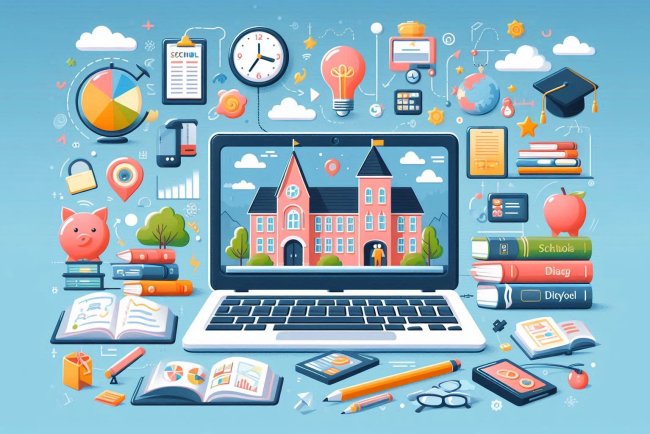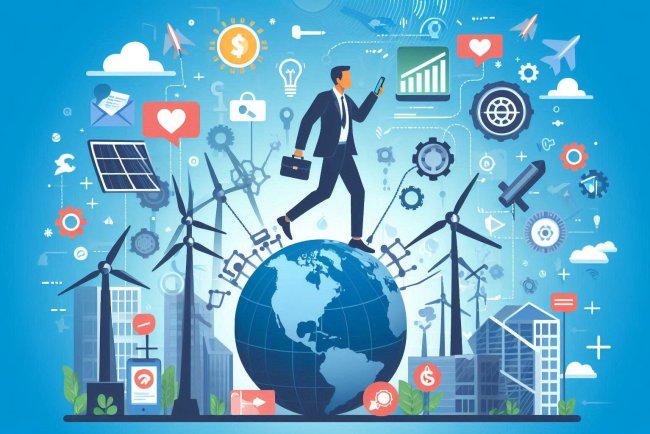Renewable Energy and the Internet of Things (IoT)
Discover the powerful connection between renewable energy and IoT. Explore how technology is shaping the future of sustainable energy solutions.

Renewable Energy and the Internet of Things (IoT)
The Internet of Things (IoT) is revolutionizing the way we interact with technology and the environment. It is a network of interconnected devices that can communicate and share data with each other over the internet. In recent years, IoT has been playing a significant role in the field of renewable energy, helping to improve efficiency, reduce costs, and promote sustainability.
Integration of IoT in Renewable Energy Systems
Renewable energy sources such as solar, wind, and hydroelectric power are becoming increasingly popular as the world seeks to transition to a more sustainable energy model. IoT technology is being integrated into these renewable energy systems to optimize their performance and enhance their capabilities.
For example, IoT sensors can be installed in solar panels to monitor their efficiency and detect any issues in real-time. This data can then be transmitted over the internet to a central monitoring system, allowing for immediate action to be taken to resolve any problems. Similarly, IoT devices can be used in wind turbines to adjust their positioning based on weather conditions, maximizing energy production.
Energy Management and Monitoring
IoT devices are also being used to improve energy management and monitoring in both residential and commercial settings. Smart meters, for example, can track energy consumption in real-time and provide users with insights into their usage patterns. This information can help individuals and businesses make informed decisions about their energy usage and identify areas where they can reduce waste.
In addition, IoT-enabled thermostats and lighting systems can be used to automatically adjust energy usage based on occupancy and environmental conditions. This not only saves energy but also increases comfort and convenience for users.
Grid Integration and Demand Response
One of the key challenges in incorporating renewable energy sources into the existing energy grid is the variability of these sources. IoT technology is helping to address this challenge by enabling grid operators to better predict and manage energy demand in real-time.
By using IoT devices to collect data on energy production and consumption, grid operators can optimize the distribution of energy from renewable sources and reduce reliance on fossil fuels. IoT can also enable demand response programs, where consumers can adjust their energy usage in response to fluctuations in supply and demand, helping to stabilize the grid and prevent blackouts.
Predictive Maintenance and Asset Management
IoT sensors are being used in renewable energy systems for predictive maintenance and asset management. By monitoring the performance of equipment such as solar panels and wind turbines, IoT devices can detect potential issues before they lead to costly failures.
This proactive approach to maintenance not only reduces downtime and maintenance costs but also prolongs the lifespan of renewable energy assets. By leveraging IoT data, operators can schedule maintenance activities more efficiently and ensure that their systems are operating at peak performance.
Challenges and Future Outlook
While the integration of IoT in renewable energy systems offers numerous benefits, there are also challenges that need to be addressed. These include data security and privacy concerns, interoperability issues between different IoT devices, and the need for standardized protocols and regulations.
However, despite these challenges, the future looks promising for the intersection of renewable energy and IoT. As technology continues to advance, we can expect to see even greater integration of IoT devices in renewable energy systems, leading to increased efficiency, reliability, and sustainability.
Conclusion
The combination of renewable energy and the Internet of Things (IoT) has the potential to revolutionize the way we generate, distribute, and consume energy. By leveraging IoT technology, renewable energy systems can become more efficient, reliable, and cost-effective, helping to accelerate the transition to a more sustainable energy future.
As we continue to explore the possibilities of IoT in renewable energy, it is important to address the challenges and work towards developing innovative solutions that maximize the benefits of this exciting intersection of technologies.
What's Your Reaction?

















